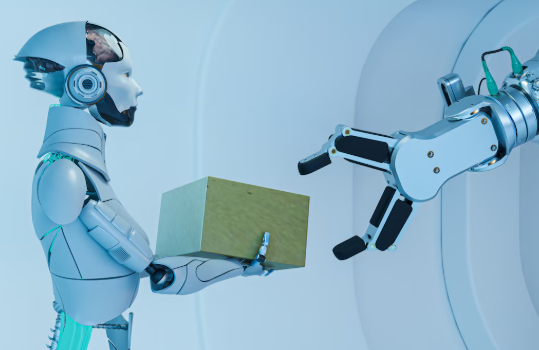Digital transformation strategy, cloud services, cybersecurity for business, and enterprise applications have become essential pillars in today’s corporate mergers and acquisitions (M&A). As organizations consolidate, the success of M&A transactions increasingly depends on how seamlessly companies can integrate their digital ecosystems. From aligning cloud platforms to ensuring secure workplace collaboration, digital harmony is the new driver of growth. At STL Digital, we help businesses navigate these complex integrations, ensuring that digital ecosystems are aligned, secure, and optimized to drive value during M&A transactions.
Why Digital Harmony Matters in M&A
M&A deals are not just about combining balance sheets—they are about aligning people, processes, and technology. In today’s environment, that means:
- Cloud-first integration to unify operations and data.
- Security-first design to safeguard sensitive information during transitions.
- Employee experience optimization with collaborative digital workplaces.
A robust Digital Transformation strategy ensures that the combined entity not only survives integration but thrives in a competitive landscape.
The Cloud as a Unifying Platform
Cloud platforms are often the backbone of post-merger digital ecosystems. They allow organizations to:
- Standardize IT infrastructure,
- Eliminate redundant systems,
- Accelerate scalability, and
- Drive cost efficiency.
According to Forrester, global technology spend will surpass $4.9 trillion in 2025, driven by investments in cloud technologies, cybersecurity, and generative AI. Software and IT services will account for 66% of this spend, proving that cloud investments are now central to business growth.
For companies undergoing M&A, cloud services are the bridge that connects different IT environments into a cohesive, scalable system.
Cybersecurity as the Cornerstone of Trust
Cybersecurity becomes even more critical in M&A scenarios. The integration process often exposes gaps that attackers can exploit, from compromised credentials to unpatched systems.
Gartner forecasts spending on cloud security will grow 24% in 2024, making it the fastest-growing area of global security and risk management. By 2027, more than two-thirds of reported security incidents will involve cloud or third-party infrastructure, highlighting the urgency for enterprises to invest in robust protection.
This underscores the importance of Cyber Security for business in M&A transactions. Organizations must implement zero-trust frameworks, ensure data encryption, and maintain compliance across industries to protect both customer trust and shareholder value.
Empowering Workplaces with Enterprise Applications
Beyond infrastructure and security, the success of M&A depends heavily on employee productivity and collaboration. Disconnected systems can slow down integration, frustrate teams, and derail synergy goals.
By consolidating enterprise applications such as ERP, CRM, HRM, and collaboration tools, businesses can:
- Enable smoother workflows,
- Improve transparency,
- Support hybrid work, and
- Drive cultural alignment.
In fact, post-merger workplace modernization has become a critical driver of digital harmony. Tools powered by cloud services and secured by AI-driven cyber security for business create unified, high-performing digital workplaces.
The Growth Opportunity
The future of M&A is inseparable from technology adoption. Consider these trends:
- Generative AI will be embedded in workplace tools, improving decision-making and productivity.
- Cloud-native enterprise applications will help companies innovate faster.
- Cybersecurity modernization will ensure resilient business continuity.
With the artificial intelligence market projected to reach $244.22 billion in 2025 and grow to $1.01 trillion by 2031 (Statista), businesses that align their post-merger digital strategies with AI and automation will see long-term competitive advantage.
Building Digital Harmony in M&A
To achieve true digital harmony, enterprises must:
- Define a Unified Digital Transformation Strategy
- Align technology goals with business objectives.
- Prioritize cloud-first adoption and security-first culture.
- Accelerate Cloud Services Integration
- Migrate workloads efficiently.
- Standardize platforms across merged entities.
- Embed Cyber Security for Business at the Core
- Implement advanced threat detection.
- Ensure compliance with global regulatory standards.
- Modernize Enterprise Applications for Collaboration
- Consolidate apps into a unified platform.
- Enhance employee engagement through digital workplaces.
Partnering for Success
Achieving this harmony requires expertise, foresight, and execution. That’s where STL Digital comes in. With proven capabilities in digital transformation strategy, cloud services, cyber security for business, and enterprise applications, STL Digital helps organizations maximize the value of their M&A investments.
Whether it’s securing multi-cloud environments, modernizing legacy systems, or enabling collaborative workplaces, STL Digital ensures businesses transform with speed and resilience.
Final Thoughts
In the era of digital-driven growth, M&A success is no longer defined by financial synergies alone. True success lies in achieving digital harmony—where cloud, security, and workplace systems converge into a unified ecosystem. Investment in cloud and cybersecurity will only accelerate. Enterprises that embrace this shift with a well-defined digital transformation strategy and leverage modern enterprise applications will unlock lasting growth.
By partnering with STL Digital, organizations can transform M&A complexity into an opportunity—building stronger, smarter, and more secure businesses for the future.



